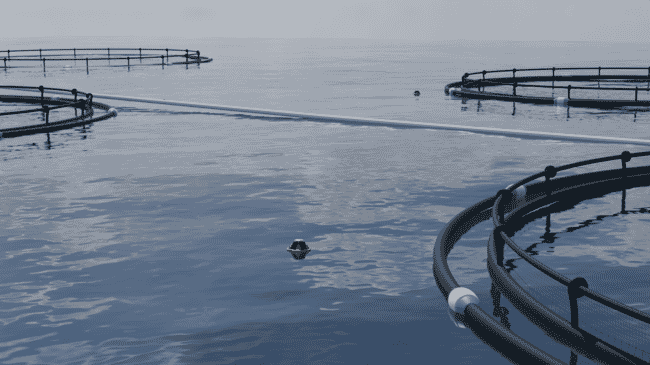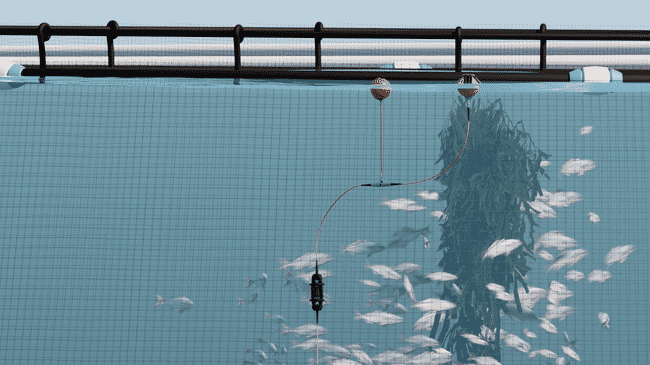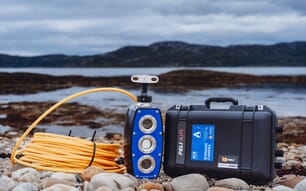
Called the Spotter Platform, it is produced by Sofar Ocean, a San Francisco-based climate technology startup. On the surface, it can make direct observations of wave spectra, wind speed, sea surface temperature, and atmospheric pressure. Below the surface, through deployment with Smart Mooring, the Spotter Platform can measure subsurface temperature, water level and currents out of the box. Other off-the-shelf sensors and devices integrate with the Spotter Platform via the Bristlemouth open ocean connectivity standard.
Sofar Ocean has long catered to the aquaculture sector, where farmers have leveraged the real-time data on surface and subsurface conditions offered by the Spotter Platform.
“Farmers and installers of aquaculture equipment tend to rely on data from models, which are not as accurate as real-time observations made onsite. The Spotter Platform can be used to both assess conditions at established sites – to mitigate risks – and to inform the site selection process,” explains Jasmine Eggleton, lead commercial account executive at Sofar Ocean.
As Sofar continues to expand the Spotter Platform's sensing suite, it does so with the aquaculture industry in mind.
The platform's newest capability, subsurface current measurement, is highly valued by aquaculture providers. The current sensors can be set at separate depths – for example at 5 m and 15 m – in order to help understand the effect that currents have on the nets.
“The ability to easily measure subsurface currents is essential, as industry best practices in some countries, including Scotland, stipulate that a minimum of 90 days worth of current measurements are recommended before the potential suitability of a proposed site can be accurately assessed,” Eggleton notes.

Investment and deployment
According to Eggleton, the Spotter Platform is affordable for farms of all sizes. A small additional monthly subscription, not dissimilar to that of a mobile phone contract, is sufficient to cover the transmission of the real-time data collected onsite.
Deployment is similarly straightforward.
“The Spotter Platform is a small, lightweight system, so you don’t need a massive vessel to install or maintain it. Maintenance typically only involves the removal of biofouling,” Eggleton reflects.
How many Spotter Platforms should a provider plan to deploy? According to Eggleton, one is typically sufficient for each site, but for locations exposed to extreme conditions from more than one direction – which is increasingly the case as companies look to expand further offshore – she recommends deploying a fleet of multiple systems.
The problem
The least predictable variables affecting farming operations are the conditions of the ocean, which include wave height, current strength, and wind speed. These often dictate which tasks farmers are able to carry out; on some days, farmers have to complete jobs like feeding remotely, as it is deemed unsafe to visit their sites in-person.
Traditionally, onsite personnel decide if an operation can be safely completed. However, this can lead to very different interpretations of what constitutes “safe” conditions, creating uncertainty for company leaders.
Determining the potential suitability of a new proposed site can also be challenging.

The solution
Early aquaculture adopters of the Spotter Platform include Mørenot, one of the world’s preeminent developers and installers of high quality nets, pens, and moorings. Mørenot partnered with Sofar Ocean to deploy a Spotter buoy to make surface observations at one of its customer’s aquaculture sites. The Spotter – which constantly collects wave, wind, sea surface temperature, and barometric pressure data – allows Mørenot to cross-reference objective in-situ observations with onsite personnel’s subjective assessments.
Over time, these comparisons will be used to identify patterns, backed by data, that reveal what conditions should be considered safe. This allows Mørenot to standardise the decision-making process; if wave heights are above a specific benchmark, for example, certain operations may cease.
Data from the Spotter can integrate with the operations calendar that farmers access via Mørenot’s Aquacom platform. Users can instantly see, given the real-time ocean conditions and established standards, which tasks are safe to complete. This makes operations more efficient by improving planning and reducing weather-related downtime. To learn more about how other marine professionals successfully collect ocean data at scale, download Sofar’s white paper.
Why Sofar?
Yngve Askeland, CEO of Mørenot Digital, says that he chose Sofar’s Spotter buoy “because it is affordable, easy to deploy, and simple to maintain. It is also easily connectable to Mørenot’s existing digital platform, Aquacom. Additionally, I was impressed by the cellular connectivity and reduced power consumption. Both features increase its reliability during winter in Norway.”
Looking ahead
Eggleton is looking forward to demonstrating the Spotter Platform, particularly its subsurface current measurement capability, at the Aquaculture UK exhibition, which is taking place in Aviemore, Scotland, on 14-16 May. If you are attending Aquaculture UK and wish to inquire about Sofar Ocean, please contact Jasmine Eggleton here.
Looking further ahead, Eggleton notes that, in addition to establishing commercial relationships, Sofar is also keen to collaborate with industry players on grant-funded R&D projects.
“If, for example, customers want to integrate an additional measurement capability – such as a turbidity sensor – into the Smart Mooring, we can support that effort,” she explains.
Learn more about the Spotter Platform
To learn more about the capabilities of the Spotter Platform, check out Sofar's white paper. To connect with the Sofar sales team, please fill out this short form.




